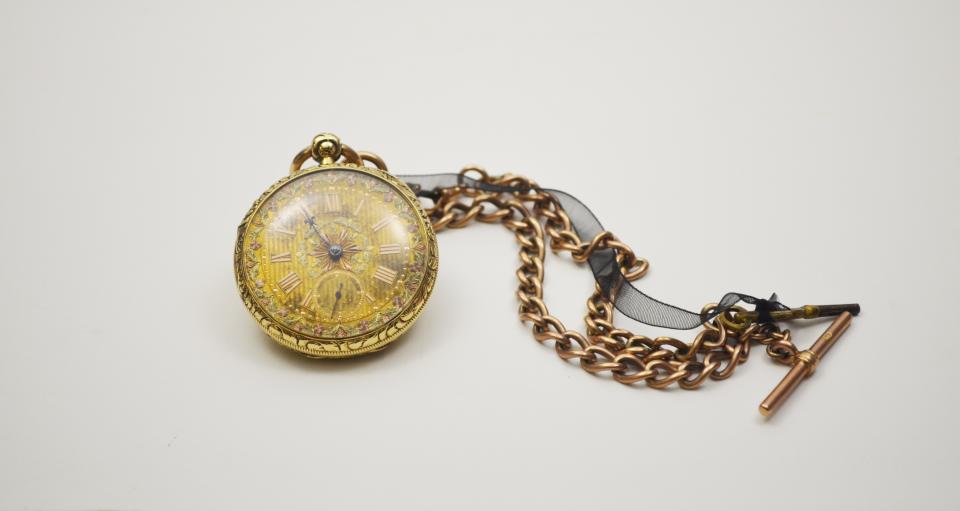
Length: 26.5 cm Width: 5.0 cm Height: 1.3 cm
An 18-karat gold open-faced pocket watch with a chain and watch key. a - The watch has a hinged glass cover and ornate face with roman numeral numbers. There is a repeating rose gold and green foliage design around the circumference of the watch face with a star and foliage motif in the centre where the watch hand is attached to the watch. Around the circumference of the glass cover is a gold band that is decorated with a leaf motif. The initials "J C" are engraved in cursive on the back of the watch which hinges open to reveal the winding mechanism for the watch. Stamped onto the interior of the back is an image of a crown with "18" below it. "T. [H.]" and "5422" are also stamped on the interior of the back hinge. b - The watch key is attached to the watch with a black grosgrain ribbon, it has a looped brass handle and tubular shaped stem.
The invention of the first pocket watch can be dated to approximately the early 16th century when German watchmaker Peter Henlein was able to create the small portable timepiece. However, these small clocks were commonly worn on a chain around one’s neck. It was not until the invention of the waistcoat by Charles II of England that the term “pocket watch” was attributed to this invention after he included a pocket specifically to carry the small watch. Pocket watches were cemented as a status symbol in the 18th century when diamonds and jewels were added to their design, ensuring only the elite could purchase this accessory. However, later in the 1800’s with the introduction of standardized watch parts, pocket watches became more widely accessible to the public. This pocket watch was owned by Mayor John Counter and dates to approximately 1810.
